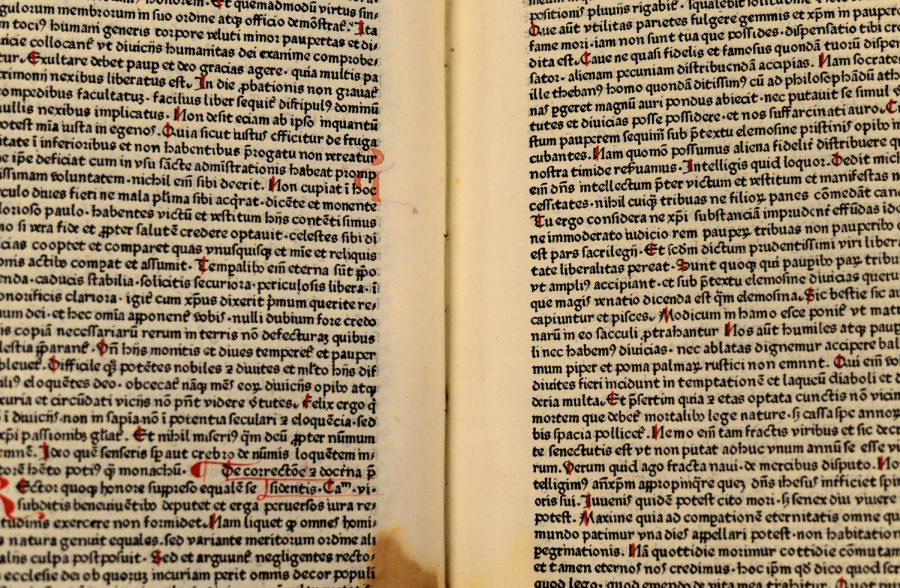Library top floor houses rare historical documents
On the 12th floor of the Kent State University Library is the Library Collections and Archives that holds a collection of historic books and items. This book is the oldest printed book in the collection, printed in 1470. Inside are the writings of St. Jerome, in Latin. St. Jerome is the patron saint of librarians and is best known for translating most of the Bible into Latin.
February 15, 2017
Located on the top floor of the University Library is Kent State’s best kept secret.
The Special Collections and Archives preserves primary sources and rare materials for people to learn from in the future.
“They’re here for students and other people to look at and use to tell a story or to answer historical questions, those sorts of things,” said Cara Gildgenbach, head of Special Collections and Archives and an associate professor.
Although it is located right on campus, many students are not aware of the Special Collections and Archives department and don’t utilize its materials. However, students are not the only ones able to access the historical inventory.
“Anything that is in the collection is open to anyone,” Gilgenbach said. “People don’t even have to be affiliated with Kent State to use our materials.”
In fact, Gilgenbach estimates that most of the people who use the Special Collections and Archives are non-students looking to conduct their own personal research.
Since it is important that these materials are preserved, there are extensive security measures in place to keep all of the items intact.
When people come in, they must fill out a registration and keep their coats and bags in an assigned area. They can then use the materials right there in the reading room.
“We have the same kinds of security and use protocols that almost any special collections department or archival department would have,” Gilgenbach said. “None of our materials can actually be checked out, unlike the rest of the stuff in the library.”
All of these measures are in place to help ensure that these materials can survive for the future.
“It’s really about preservation and being sure that these maybe one-of-a-kind materials actually can be used by people a hundred years from now,” Gilgenbach said.
Employees make all of the photocopies for people instead of patrons doing it themselves, and other precautions are in place to prevent fingerprint damage.
“If you’re working with photographs, for example, we might ask you to put on cotton gloves to try to protect those,” Gilgenbach said.
Gilgenbach said the two most heavily used collections are materials that document the history of Kent State and the May 4 Collection. The Special Collections and Archives also always has new exhibits up, and has a huge “Babar the Elephant” collection.
The Special Collections and Archives Library was awarded a matching grant in September 2016 from the National Historical Publications and Records Commission. According to Digital Projects Librarian Virginia Dressler, the $119,000 grant allowed the library to pick 34 sub-collections from the May 4 Collection to convert to digital.
“We have four sub-collections up online to date. We got to hire a full-time project archivist to help in this whole initiative and two student workers that started in the beginning of January,” Dressler said.
This project is still ongoing and students can check out the progress on the archives’ website.
“I think the biggest challenge we have is people just knowing we’re here,” Gilgenbach said. “I guess what I would want people to know is yes, we have these protocols for using our materials but the collections are really here for you, these are here for you to use; we’re going to help you access them, but you can also just come out of general curiosity.”
Paige Brown is the libraries reporter, contact her at [email protected].

























